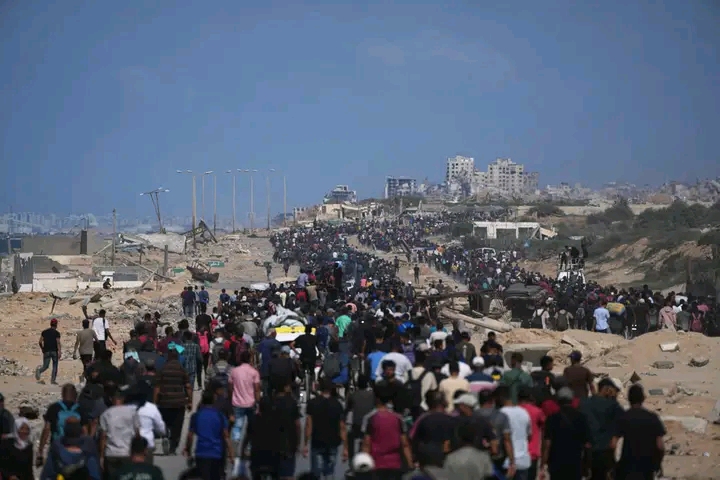
Around 200,000 Palestinians have made their way back to northern Gaza following the start of a long-awaited ceasefire that has finally halted months of devastating conflict. The return marks a significant turning point in a war that left thousands dead, entire neighborhoods flattened, and basic services destroyed. Many of the returnees have described scenes of unimaginable ruin—collapsed buildings, shattered infrastructure, and streets covered in debris—yet their return also carries a sense of relief and cautious hope. Families who had spent months in overcrowded shelters or displaced in southern Gaza are now trying to reclaim what little remains of their homes, salvaging belongings and clearing out the wreckage of their former lives.
The ceasefire, brokered through intense diplomatic negotiations led by Egypt, Qatar, and the United States, took effect after weeks of pressure from the international community. Its implementation has allowed humanitarian convoys to resume movement across the enclave, bringing much-needed food, medical supplies, and clean water to hundreds of thousands of civilians. Aid agencies have described the situation as a race against time, with critical shortages of medicine and shelter continuing to threaten the lives of those who survived the war. Despite the fragile calm, concerns remain that sporadic violations could derail the peace process if both sides fail to adhere to the agreed terms.
In Cairo, regional and international leaders have convened for a high-level summit aimed at formalizing the peace deal and charting a roadmap for Gaza’s reconstruction. The summit’s agenda includes the establishment of a multinational committee to oversee aid distribution, monitor compliance with the ceasefire, and facilitate long-term political dialogue between Israel and the Palestinian factions. Egypt’s President Abdel Fattah el-Sisi, who played a central role in mediating the deal, emphasized that the peace process must lead to a sustainable solution rooted in mutual recognition, security guarantees, and humanitarian relief.
Meanwhile, in Israel, preparations are underway for the final round of hostage releases, a key component of the truce that has already seen dozens freed in earlier phases. The Israeli government has confirmed that once the remaining hostages are safely returned, additional humanitarian measures will follow, including expanded entry of reconstruction materials and easing of border restrictions. Families of the hostages have expressed mixed emotions—gratitude for the releases, but lingering grief for those still missing or confirmed dead.
The coming weeks are expected to test the resilience of the ceasefire and the willingness of both sides to prioritize rebuilding over renewed confrontation. For many Palestinians returning home, the journey north is not just a physical return, but a symbol of endurance and the hope that peace, however fragile, might finally take root in Gaza after years of suffering and displacement.

